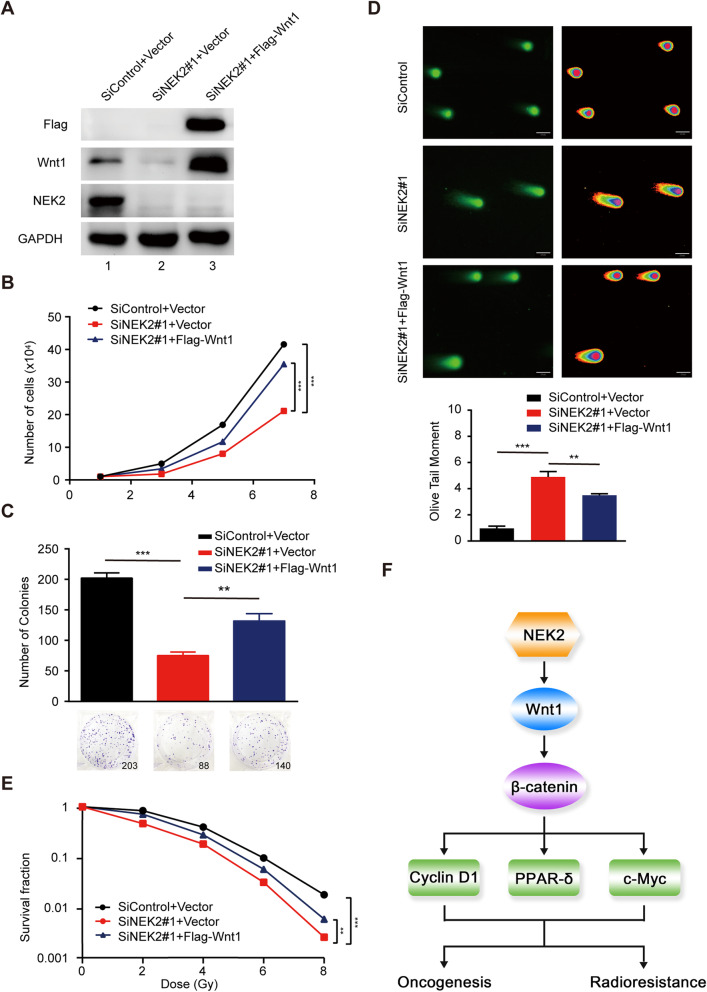Fig. 6.
Wnt1 overexpression partially rescues the impaired proliferation and radioresistance in cervical cancer cells. a NEK2 knockdown SiHa cells were reconstituted with empty vector or Flag-tagged Wnt1 vector (n = 3). b SiHa cells transfected with the indicated siRNAs and plasmids were seeded, and cell numbers were calculated every other day. *** P < 0.001 (n = 3). c Upper panel: SiHa cells transfected with the indicated siRNAs and plasmids were seeded and grown for two weeks. The number of colonies was counted. Lower panel: Colony formation was quantified. ** P < 0.01, *** P < 0.001 (n = 3). d Neutral comet assay was performed after exposure to irradation. Upper panel: Representative images showing olive tail moment. Scale bar, 50 μm. Lower panel: the olive tail moment was quantified and graphed. ** P < 0.01, *** P < 0.001 (n = 3). e SiHa cells were irradiated with the indicated doses after transfection with the indicated siRNAs and plasmid. Colony survival rates were determined two weeks later. ** P < 0.01, *** P < 0.001 (n = 3). f A proposed model illustrating the mechanism by which NEK2 promotes cervical cancer oncogenesis and radioresistance. NEK2 upregulates Wnt1 and activates the Wnt/β-catenin signaling pathway, thereby inducing the expression of β-catenin downstream target genes and ultimately promoting oncogenesis and radioresistance in cervical cancer

